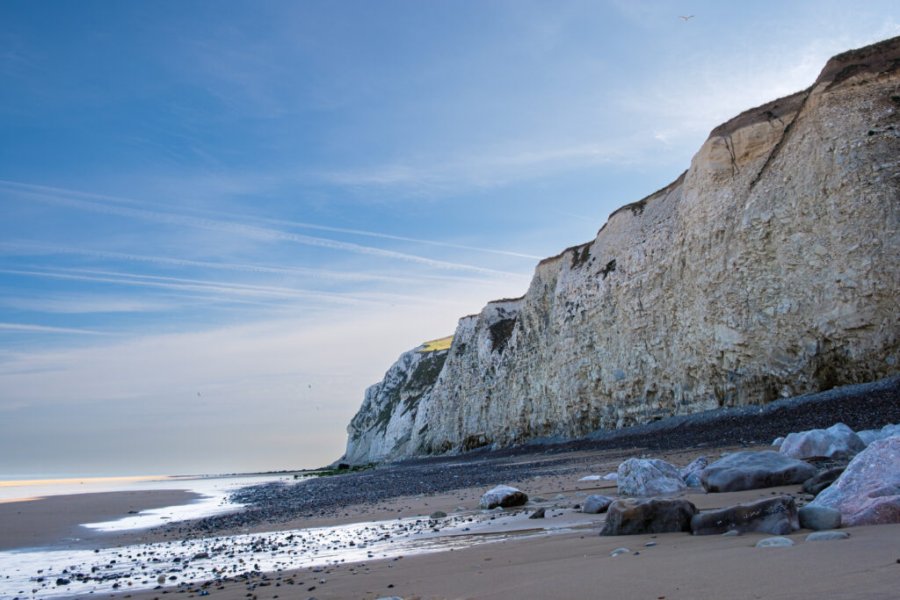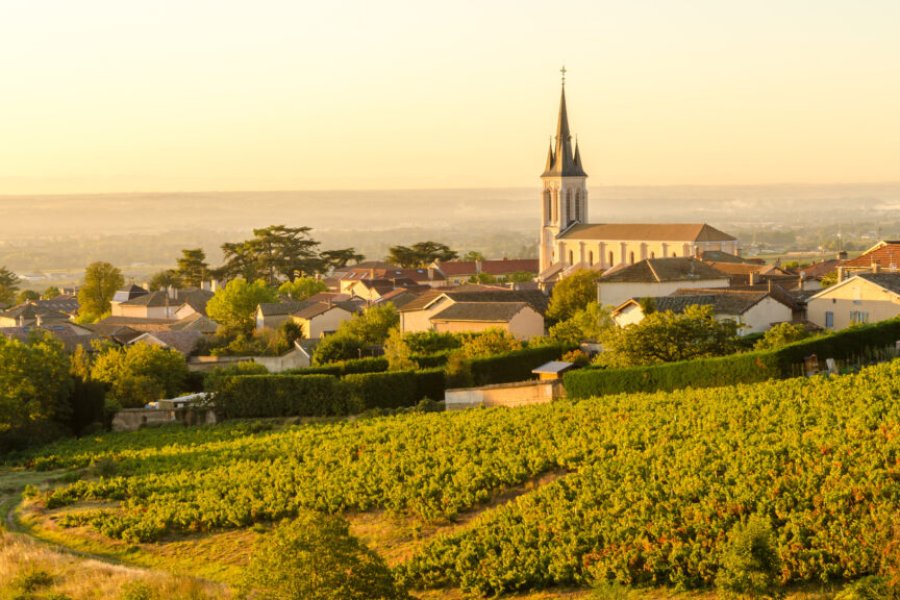Stay : One week in Beirut
The first five days of the week are mainly devoted to the visit to Beirut. The following are an opportunity to discover other landscapes on the outskirts of the Lebanese capital.
Summary of the stay
Best time to go
7 days
€€ - Charm and comfort
Detail of the stay : One week in Beirut - 7 days
Day 1: Downtown Beirut
Steps: Beyrouth
The visit of Beirut can start with its city centre: tourist showcase, renovated old centre, new modern centre. He wears several hats alone. The walk in the centre is an opportunity to discover a special district in the capital. The streets are clean, the sidewalks new and wide, the security is omnipresent, and the windows elegant. The Martyrs' Square is dominated by the Al-Amine Mosque, which can be visited outside prayer times. Just next to the mosque is the Cathedral of St. George of the Maronites and its imposing bell tower, then on the right of the Roman baths dating from the 1st century. Just behind it, you will reach it place de l'Etoilewith its central clock, the Lebanese Parliament and the two churches of St. George of the Orthodox and St. Elijah. In the basement of the Orthodox church, the visit to the archaeological crypt is enriching. Still to the north, you will arrive at the foot of the Omari mosque built in an old cathedral, then at the entrance of the new Beirut Souks. This vast shopping centre, inaugurated in 2010, includes dozens of international franchises. After walking through the alleys of the Souks, you can continue your shopping in the pedestrian area of Foch-Allenby, also a highly sought-after address for local and global luxury. The Samir Kassir garden offers a shady stopover. To the north of this area, the Beirut Exhibition Center can be seen in the distance, which is located on land reclaimed from the sea near the BIEL exhibition hall. You can then walk along the downtown cornice, which is dominated by luxury residential buildings and hotels, and head towards Baie du Saint-Georges, now known as Zaitunay Bay. A pleasant place to have a drink and dinner on the terrace.
Day 2: Walk on the seaside and Hamra district
Steps: Beyrouth
It only takes one beautiful sunny morning to enjoy the cornice which stretches for several kilometres from Ain el-Mreissé to Ramlet el-Baïda. Renovated several times, the walk along the rocks of the coast is typical and very pleasant! Once you arrive in Manara, take a look far away at the very degraded pink building with its arcades, at the foot of the old black and white lighthouse. A stop at the Raouda café is a must. What a pleasure to drink your coffee by the water! If you feel like it, you can go swimming at Sporting, a private beach with an outdated 1950s look, so authentic. No more tanning, the small coast of Manara leads you to Raouché. You will have a fantastic view of the site of the Grotte aux Pigeons, two large limestone rocks in the middle of the water. Then the ledge continues towards the public beach of Ramlet el-Baïda.
After this long walk along the ledge, take advantage of the taxi service between Ramlet el-Baïda and Hamra to regain your strength. Ask to stay next to the Commodore or Coral Hamra hotel and then enjoy the terrace of the Younes café, our favourite in the neighbourhood. A stroll along Hamra Street allows you to discover one of Beirut's most lively districts and the most representative of the Lebanese mix. Intellectuals and artists liked to find their way around in the 1960s and 1970s. Some decrepit facades of office buildings (Strand, Eldorado, Piccadilly, Al-Hamra) remind us that Hamra was once a modern business centre. After a good Lebanese mezzé, go down to the campus of the American University of Beirut (AUB). Its archaeological museum is worth a look. Then take a walk through the campus aisles. Located on this site since 1871, AUB has several old buildings: College Hall dated from 1873, destroyed by a bomb, it was rebuilt identically; Assembly Hall from 1891; Post Hall from 1902. If you go out through the Medical Gate (the most easterly door on campus), you can admire the black glass facades of the very vintage Gefinor centre. If the weather permits, you can continue to Clemenceau, which has kept some splendid palaces: Joumblatt, Ladki and Daouk.
MUSÉE ARCHÉOLOGIQUE DE L'AUB / GROTTE AUX PIGEONS / PLAGE DE RAMLET EL-BAÏDA / AMERICAN UNIVERSITY OF BEYROUTH (AUB) / CENTRE D'AFFAIRES GEFINOR
Day 3: Discovery of the Zokak el-Blatt district
Steps: Beyrouth
The Zokak el-Blatt district keeps the last architectural treasures of Beirut, i. e. specimens in danger of extinction. On the southern edge of the city centre, this area still has some beautiful palaces and old residences dating from the 19th and early 20th centuries. None of them can be visited, you have to be satisfied with a walk and admire only the facades and the exterior. But it is also an opportunity to discover a small district of the capital. From Zokak el-Blatt, you can follow Spears Street in the opposite direction, which also has some old buildings with beautiful volumes and facades with the famous arcades, including the Yamouth residence (known as Zico House, which hosts artistic activities). Before arriving in Hamra, you cannot miss the garden of Sanayeh, the largest in Beirut. Beirut comes very early to walk or play cards. Created in 1907 by the wali Khalil Pasha, it is a relaxing place. To finish the day, head for Verdun Street, the shopping temple in Ras Beirut. Several shopping malls are home to international franchises. Several restaurants and cafés are located there.
Day 4: Gemmayzé and Monnot districts
Steps: Beyrouth
The day should start with a visit to the Gemmayzé district. As pubs and restaurants are closed, it is during the morning that it is possible to discover this area bordering the city centre at its best. A walk along Gouraud Street offers the opportunity to admire some beautiful façades of old buildings and beautiful residences. Gouraud Street leads to the Mar Mikhael district, known to house the EDL (Electricité du Liban) building. The main road is then called the rue du Fleuve, garages see new art galleries and small restaurants arrive, the most famous of which is Tawlet, a highly appreciated organic product that offers a delicious buffet for lunch.
Back in Gemmayzé, go up the Saint-Nicolas staircase which leads to Sursock Street. It houses several 19th and 20th century palaces, as well as the new Sursock Museum, which is worth a visit. Then cross Avenue Charles Malek, the Saint-Nicolas garden with its vintage pool is welcome to take a break. Take Bustros Street, then Mar Mitr in the opposite direction to enjoy ice cream at Hanna Moussa's, one of the best glaciers in the city. Go up Mariam Geahchan Street to reach Sassine Square and the ABC shopping centre. From Place Sassine, you can go down Abdel Wahab el Inglizi Street to reach the Monnot district and the Sodeco crossroads. It is impossible to miss the facade of the Barakat building, a yellow building that has been very badly damaged following the war and which has just been completely renovated and which should soon house a museum on Beirut's history.
Day 5: A day in the museums
Steps: Beyrouth
What a pleasure to start the day with the National Museum, which houses an impressive collection of objects covering all periods of Lebanese history! Inaugurated in 1942, it was renovated after the civil war. This museum exhibits unique pieces such as bas-reliefs, mosaics and many sarcophagi. Further up the rue de Damas, in front of the French Embassy, do not miss the visit of the musée des minéraux, which is located in the grounds of the University of Saint-Joseph.
A small tour by taxi-service (LBP 2,000 per trip) to reach the Jisr el-Wati sector where the Beirut Art Center is located, an exhibition hall mainly oriented towards contemporary art. Again, a short taxi service trip to discover Borj Hammoud, an Armenian district on the edge of the Beirut river. This district is a city in itself.... It is very lively and offers the opportunity to discover good Armenian cuisine and to admire the know-how of Lebanese and Armenian jewellers.
If you have any time left, head for the heights of Beirut towards Beit Meri. 25 minutes from the capital, this village is best known for hosting the Al-Bustan festival in February, but it also has two remarkable and little-known historical sites: the chapel of the convent of Saint-Jean-Baptiste built in 1750 on the foundations of an ancient Roman temple and the ruins of a Romano-Byzantine village.
Day 6: Archaeological remains and natural site
Steps: Beyrouth
The day will be devoted to visiting tourist sites in the northern suburbs of Beirut. At the exit of the capital, along the northern highway just after the tunnel, are the stelae of Nahr el-Kelb. Since ancient times, many conquerors have carved in stone the story of their exploits. The stelae date back to Ramses II up to General Gouraud's French troops in 1920. A stele was added in 2000 for the liberation of southern Lebanon. Once at the top of the promontory, the view of the coast makes you forget the noise of the highway.
After Nahr el-Kelb, take the expressway on your right which goes up towards Faraya station. After a few kilometres you will find the Jeita caves, which are one of the most beautiful natural sites in Lebanon. Discovered in 1936, then in 1958, they consist of two galleries, one of which is crossed by an underground river that can be visited by small boat. The second gallery allows you to venture about 700 m underground. It's beautiful!
From Jeita, you can go down to Jounieh. This small coastal town is pleasant. Its historical heart is limited and can be visited quickly. By taking the cable car, it is possible to have a magnificent panorama. Located in front of Saint-Louis Hospital, the cable car takes you to Harissa Cathedral, which overlooks the bay. In the evening, it's beautiful!
Day 7: Lazing around on the beach
Steps: Beyrouth
After several days in traffic jams and walking to discover Beirut, why not use your last day in Lebanon to enjoy its sun and private beaches. There is no shortage of choice. In Beirut, you can relax at the Saint-Georges, the Sporting or the swimming pool of the Riviera hotel. For more change of scenery, it is necessary to leave Beirut towards the south to enjoy the beaches of Damour, Jiyé or Rmeilé. The complexes follow each other along the old shipping route. Each one offers quality services. Have a nice swim!
Ideas for holidays and week-end breaks Beirut
-
Find a hotel
-
Car Rental
-
-5% on travel insurance-15% off travel insurance
-
Find a local agency






